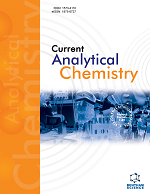
Full text loading...

The chemical composition of Ophiopogonis Radix originating from different districts is somewhat different due to the different planting environment. This difference affects the pharmaceutical efficacy of Ophiopogonis Radix, and therefore poses a challenge to the quality assessment and control of Ophiopogonis Radix. This study aims to develop a method to discriminate Ophiopogonis Radix from various planting districts by using infrared (IR) spectroscopy in combination with a one-dimensional convolutional neural network.
The spectral data of Ophiopogonis Radix samples from five planting districts were collected and preprocessed with Savizkg-Golag (SG) smoothing and the Standard Normal Variate (SNV) algorithm. Back propagation (BP) artificial neural network (ANN) and one-dimensional convolutional neural network (1D-CNN) were employed to build the pattern recognition model for discriminating the investigated Ophiopogonis Radix samples.
The discriminant accuracy of the ANN model after SG and SNV preprocessing reached 94.42% and 96.98% respectively. The discrimination accuracy of the 1D-CNN model after SG and SNV preprocessing reached 98.67% and 99.33%, respectively. It is demonstrated that both the ANN model and the 1D-CNN model are able to discriminate Ophiopogonis Radix samples from different planting districts. Moreover, the developed 1D-CNN model shows higher discrimination accuracy than the ANN model, and SNV preprocessing is better than SG preprocessing for improving the accuracy of the discrimination model.
In this study, the classification performance differences between the SNV-ANN and SNV-CNN models were further compared and analyzed through confusion matrices. The SNV-CNN model exhibited superior classification performance compared to the SNV-ANN model.
IR coupled with 1D-CNN is a practicable and promising approach to discriminate Ophiopogonis Radix from different planting districts. Besides Ophiopogonis Radix, this approach could be used for the planting districts discrimination of other kinds of Traditional Chinese Medicines (TCM). As a high-throughput and data-driven spectroscopic analysis approach, it can be applied to the standardized quality assessment of TCM.

Article metrics loading...

Full text loading...
References


Data & Media loading...